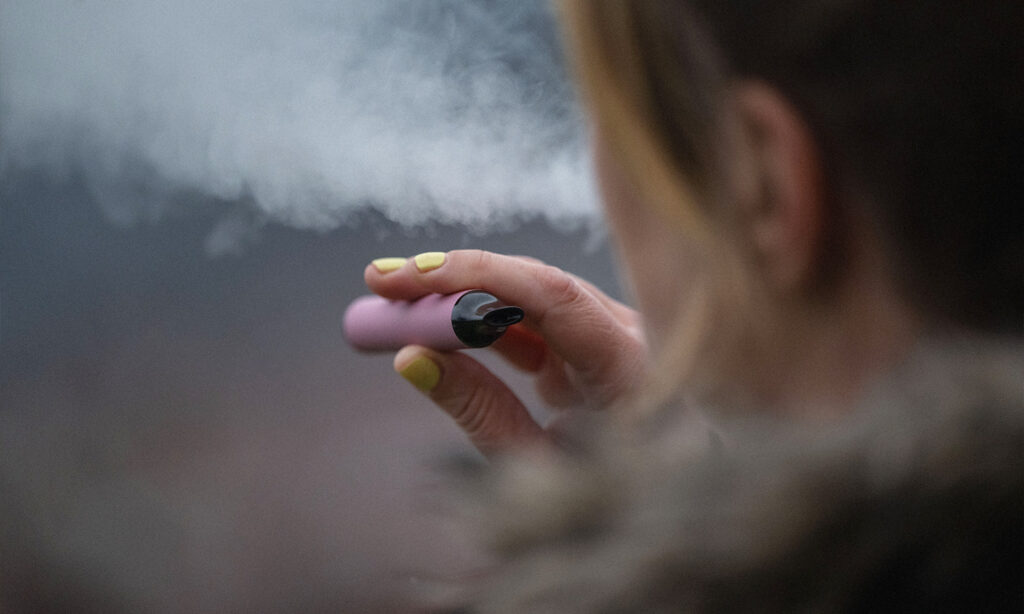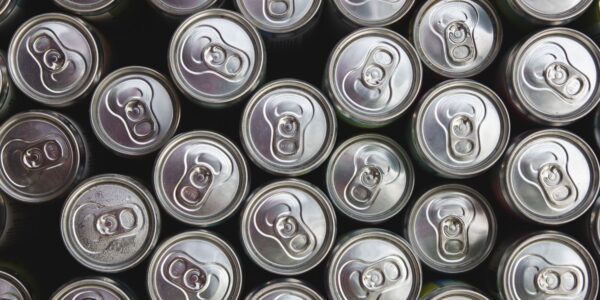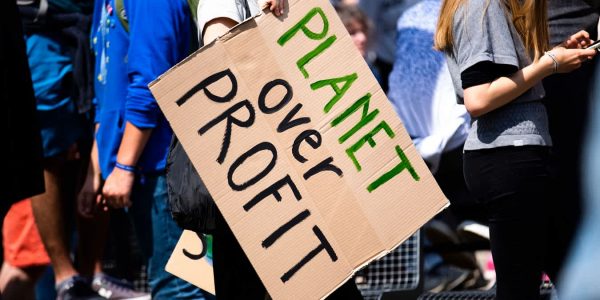Vaping is set to be banned in a national crackdown announced on Tuesday by Federal Health Minister Mark Butler. $234 million will be allocated in the upcoming budget for tougher regulations of e-cigarettes, which is likely to include a complete ban on retail sales, importation of vaping devices — with or without nicotine — and controls on packaging and flavours for those who are using vapes to quit smoking.
There are even reports that ‘vape police’ could be deployed across Australia as Butler takes aim at what he describes as “the number one behavioural issue in high schools”.
“Just like they did with smoking, big tobacco has taken another addictive product, wrapped it in shiny packaging and added flavours to create a new generation of nicotine addicts,” Butler claims. “This must end.”
The President of the Royal Australia College of General Practitioners and the Australian Medical Association have both backed the changes, but medical experts who support the use of vaping as a quit-smoking aid, alongside those who currently use vaping devices are, understandably, not best pleased with the government’s decision and have pushed back on their claims.
“This is better understood as a howl of rage from tobacco control fanatics offended by the impertinence of thousands of smokers sidestepping their controlling, punitive and coercive playbook in favour of something pleasurable,” public health expert Clive Bates has written.
Professor Ron Borland, a Health Behaviour expert at the University of Melbourne, has said that he is “gravely concerned that the government’s new policy will do more harm than good.”
“I think there is a very high likelihood it will result in an increase in the rates of tobacco smoking, even though it will achieve its proximal goal of reducing levels of vaping in the community,” he continued.
Borland has said that Australia would be better off adopting similar policies as those pursued in New Zealand, where vapes are regulated and sold with health warnings to adults, and that the current changes are a continuation of failed drug war policies..
Butler has claimed that the under-25 population is the only group in which smoking rates are rising, owing to vapes acting as a ‘gateway drug’ to tobacco use. This is a key part of his reform agenda, aiming to stop people from becoming hooked on cigarettes.
Dr Colin Mendhelson, founding chairman of the Australian Tobacco Harm Reduction Association, has pointed out that, in NSW, smoking rates amongst 16-24-year-olds declined by 25% between 2019 and 2021, faster than the 21% by which they declined amongst the general population. This group also has the highest rate of vaping usage, suggesting the behaviour is linked.
On Butler’s other claims, that the tobacco industry is marketing vapes to children, Mendhelson also points out that none of the disposable vapes sold illegally in Australia are produced by tobacco industry bodies. They are manufactured in China and come into the country without oversight, owing to the government’s own lack of regulation.
The Health Minister has also repeated the claim that young people who vape are “three times more likely to take up cigarettes” than those who don’t. Mendelson points to research conducted by himself and others that has previously debunked this claim, suggesting that people who are likely to engage in risky behaviour, i.e., vaping, are also likely to engage in other risky behaviour like smoking. They are not necessarily causally related.
If vaping was indeed a gateway to tobacco use, we would see incidences of cigarette smoking increasing alongside the use of vapes. In fact, the opposite is true, as has been reported in the UK, New Zealand, and the US where e-cigarette use has risen as smoking rates have declined.
The prohibitionist measures of the anti-vape extremists of Australia have collapsed into a chaotic mess. Predictable and predicted.
Their big idea to fix it…? …BAN HARDER!
Why do @Mark_Butler_MP and #auspol still listen to Australia's #TobaccoControl nuts? https://t.co/XNPWq7RHpk
— Clive Bates (@Clive_Bates) May 1, 2023
The national vaping ‘crackdown’ has been in the works for a long time. This is actually the second time that Australia has attempted to restrict the use of vaping products. The first was in 2021, with the introduction of the prescription model by former Health Minister Greg Hunt which actually made the sale of vapes outside of a prescription illegal.
That model hasn’t worked, as it allowed for the personal importation of vaping products that do not contain nicotine. Disposable vapes currently coming into the country are declared as being nicotine-free upon import, although that is clearly not the case. This has both created and allowed the illegal black market to flourish.
Given vapes with nicotine can't be sold in Aus and users even with prescriptions must import them from NZ or else where, how does plain packaging work? Wouldn't regulating the sale to adults only in Aus be more effective? @Mark_Butler_MP #vaping #harmreduction #auspol
— Fiona Patten (@FionaHPatten) May 1, 2023
What the government is now trying to do is close this loophole and further tighten access, doubling down on an issue they themselves created. At the same time, it puts Australia in the bizarre and globally unique position in which access to highly toxic nicotine products — i.e., cigarettes — will be more readily available than what has been determined to be a safer alternative.
Recently, the UK has embarked on a “swap and stop” plan, whereby they will distribute vaping devices to people for free in order to help them quit smoking. Multiple national health bodies have embraced the use of vapes as safer alternatives to smoking and vaping devices are sold in pharmacies as well as corner shops in the country.
However, the UK regulates the commercial sale of vaping devices, putting requisite safety and quality checks in place as well as limits on the amount of nicotine they can contain. It’s this model that advocates are pushing for Australia to adopt, in a similar way to how we regulate and sell alcohol and tobacco, but the government has rejected such ideas.
The science of vaping and its long-term health impacts are not settled, but health authorities are having to take action in lieu of clear data owing to the spread of the habit. As best we can tell, vaping is 95% safer than smoking, still one of the leading causes of preventable deaths in this country.
What Do People Who Vape Say About The Australian Vape Ban?
The Latch spoke to a number of people who use vapes, both those who have used them to quit smoking and those who have picked them up having never smoked before. Understandably, many wish to remain anonymous, however, there appears to be some divide within the community, ranging from panic, to ambivalence, and support.
One woman in her early 30s told us that she is happy the ban is coming in as it will give her an excuse and a reason to quit vaping.
“I don’t mind the rules coming in. I wanted to quit so this is my new motivation,” she said.
This chimes with the experience of Alyce, a 29-year-old account manager in Sydney who said she picked up vaping in lockdown long after having quit her social smoking habit.
“I had one friend who had a proper vape that you add the juice, and I’d have some of that every now and then, but I didn’t find it that addictive. But those disposable ones, something about them was just more addictive,” she said.
Disposable vapes, being unregulated and marked as ‘nicotine-free’, are known to contain nicotine, likely in far higher doses than someone using a refillable vape would typically use, making them more addictive.
Alyce notes that while she was drinking in social settings, she would use the vape “all night” and then the following days, to the point she would wake up and start vaping in bed.
“If I don’t have it, I don’t really crave it that much. I don’t need to go buy one. But as soon as I have a drink or someone else is like, ‘Should we get a vape? I’m like, yep’,” she explained.
the vape ban will definitely ruin my life and also make it significantly better lol
— hamish (@chantalAkerstan) May 2, 2023
Alyce too is glad the new restrictions are coming in, as she believes they will limit her access to temptation. She herself has tried to quit vaping three times but has said that her “addictive personality” has made it hard. In addition, she’s concerned about her health and has noticed tightness in her chest and persistent illnesses that she blames on vaping.
However, she did say that she is concerned about her friends who have used vaping to successfully quit cigarettes going back to tobacco. This is the fear of another person we spoke with, who we’ll call Dave, a nurse in Sydney who quit smoking four or five years ago with the help of vapes.
“I was trying to get off the cigarettes … if I went out drinking, now and then I’d have a cigarette but now I’ve completely replaced it with vapes,” he told The Latch.
He said that, with the incoming restrictions, he’s hoping to wean himself off of vaping entirely, as the new rules sound too complex to navigate. Part of the reason he quit smoking using vaping, he said, was the convenience of their availability.
“They’ve made nicotine a scheduled drug of addiction, so you need to get a prescription to get nicotine. That’s just going to be too inconvenient for me,” he said.
And if he’s not able to wean off? “Well, there’s always gonna be a way of getting vapes, right? There’s always going to be someone selling under the counter”.
However, Dave doesn’t disagree with the new restrictions. He sees the current wave of vaping as equivalent to the smoking boom of the early-mid 20th century only, this time, the products are more user-friendly and accessible, which he thinks is problematic for young people.
“When you crack down so hard on it, it takes the younger crowd out. I agree with the teachers, get the kids off the vapes, but, personally, this is not good for me”.
“We should all be able to pick a folley, right? I started vaping, I quit cigarettes, and vaping was the one thing that I could enjoy, but now that they’re taking that away, I guess I’m just going to have to find another habit,” Dave said.
Thankfully, his next habit, he suggested, might be a health kick, rather than another addictive substance. As he mentions, the experience of teachers in dealing with young people vaping is a large motivator for these changes. One NSW high school teacher who we spoke with told us that the vaping in his school is rampant.
Yes I’m addicted to nicotine – yes I agree the vape ban is a good idea – you can have two opinions at once.
— Professional Head Foot 🐸👽🤠🐴🦄🦚🐌 (@benhaspie) May 2, 2023
“There are more students vaping now were originally smoking cigarettes – even when we think back a decade ago and compare those numbers,” he explained.
“Students are more brazen in their use of vapes during school. The fact that the smell and smoke aren’t as obvious as cigarettes makes it harder to police, not only in bathrooms but any slightly obscured spot in the playground. Vapes are also much easier to hide, and there’s no evidence to catch students in the act,” he continued.
While he believes that the changes could have a “huge impact,” he is sceptical of whether or not they will actually work. Vapes are already illegal and being sold to high school students, so, “Unless the supply is properly cut off and harsher penalties are issued to retailers still selling them under the counter, there will be no change,” he argues.
However, he is somewhat concerned that some of his students may turn to tobacco if they can’t get their nicotine fix. While he doesn’t believe that most younger pupils will have developed a strong enough addiction and that many only do it “around their friends as a way to show off,” more senior students who will have access to tobacco could be a problem.
“If they have developed a nicotine addiction, and or still want the ‘cool’ factor from smoking, they may then turn to cigarettes as an alternative,” he explained.
Amongst the vaping community online, there seems to be a good deal of panic, as there is amongst those who sell vapes. One source told us that the local store they buy their disposable vapes from, which typically retail for between $30 and $40, has already started doing two-for-one deals in an effort to rapidly shift their stock.
🚨 Hurry up, vapers! 🚨 Discounted items at Vaped4u are flying off the shelves! Save big with up to 75% OFF on vape supplies.
Limited stock available, so shop now: https://t.co/B3O3NVqjaq
💨💨💨#vaped4u #vapesale #discounteditems #vapelife #vapecommunity pic.twitter.com/GI2Q4rMf6h
— VAPED4U (@vaped4u) May 3, 2023
Similarly, the website Vapoureyes NZ, one of the largest exporters of vapes to people in Australia, has had numerous flash sales recently, which are not uncommon for the site. However, their latest discount code, ‘VAPEDONTSMOKE’, gives customers free express shilling to Australia, a clear reflection of the coming changes.
Others online note they will be stocking up on nicotine and the components of reusable vapes in an effort to ride out the ban. Many have expressed scepticism about the cost, quality, and enjoyability of the vapes that will become available in pharmacies, having little faith in the government to provide a suitable alternative.
The changes, which have yet to have their implementation date revealed, will likely take months to come into play. Until then, and probably for years afterwards, we won’t know the true impact of this globally off-kilter policy.
Related: Why Are So Many Young People Taking Up Vaping? The Answers Are Foggy at Best
Related: Vape Laws in Queensland Could Change Drastically as Government Launches Inquiry
Read more stories from The Latch and subscribe to our email newsletter.







